Long wave diathermy
ABSTRACT
- Heat has been used as a therapeutic modality for a number of years and is described in two categories: superficial and deep heating agents. Deep heating modalities include therapeutic longwave and shortwave diathermy, ultrasound, and other electrical simulations.
- Long Wave Diathermy is generally used to the reduction of pain, elevate metabolic functions, elevate deep tissue temperature, and elevate a range of motion.
- While the depth of tissue heating alters with each thermotherapy modality, the primary physiological effects and benefits of using heat remain relatively constant. They involve the following: increased circulation and blood flow increased metabolism,
- elevated muscle temperature, elevated tissue temperature, decelerated pain, decreased soft tissue stiffness, and muscle spasm relaxation
- Long Wave Diathermy uses an electric current to create deep heat inside a targeted tissue. It can arrive in areas as deep as two inches from the skin’s surface. this abstract introduces a simpler version of the existing Long Wave diathermy
Introduction of the long wave diathermy
- long wave diathermy involves Oscillating electric and magnetic fields to generate heat in biological tissues by activating a rapidly alternating movement of ions, rotation of dipolar molecules, and the distortion of non-polar molecules
- A movement of ions represents a real flow of current and happens easily in tissues that reach electrolytes such as blood vessels and muscle. The activity of the long wave diathermy field at the molecular level in fatty tissues creates blood vessels, and muscle to produce heat strongly and adipose tissue to heat firmly
- because the activity is permeated by small blood vessels that include a solution of electrolytes. The heat created is then retained due to the insulating properties of fat permitting a high temperature to develop. Fibrous tissue is not particularly rich in either blood vessels or fat and generally shows moderate elevation of temperature. In general, the tissue response to long-wave diathermy compares closely with that of other methods of heating, and the common indications and contraindications are similar to those for superficial heating modalities. long wave Diathermy heats both the deep and superficial layers of tissue while the effect of superficial heating is most pointed out in the skin and subcutaneous tissues.
- the strength of electric and magnetic fields depends upon several factors including the frequency of the unit and characteristics of the applicator like capacitive electrodes.
- the longwave diathermy was generally used in the past but now the long wave diathermy is replaced by SWD with the frequency of 10 raise to 6 Hz and sets up wireless waves with a wavelength of 300 meters
- the current is termed longwave diathermy on account of the relatively long wavelength of the wireless waves that set up
- the modality is again gaining popularity among the therapist nowadays because of its better and superior effect of relieving pain compared to SWD or ultrasound
- it incorporates an innovative technology using 300-meter-long waves to create heat having the following advantages over the use of the long wave diathermy
- Long wave diathermy can be used in patients having metal implants and pacemakers since its density is not high enough to heat any metal. it does not cause irritation to any of the boney parts in the upper and lower limbs.
- deep penetration more focused treatment at the trigger points can be applied to the tendon and ligaments over bony tissue
- it gives penetration up to 4 cm and raises the temperature in the tissue, which may persist for about 45 minutes
- unlike SWD (Short wave Diathermy), it does not interfere with other modalities in the vicinity due to its lesser frequency and lower output minimal loss of energy, and no tissue damage it does not irritate the bony tissue most of the energy is absorbed in the high-density tissues like tendons, the ligament consumes less electricity the treatment with long wave diathermy is based on the capacitor field method The treatment is more accurate and penetrative, giving relief to patients much faster it has a solid-state design, no valves no crystals used
- Diathermy is commonly used to decrease pain, improve metabolic functions, improve deep tissue temperature, and improve the range of motion.
Features of the long wave diathermy
- Wide input voltage
- Microcontroller input
- The plastic molded lightweight cabinet
- Touch-free absence keys
- LCD display
- High efficiency
- Low maintenance
parameters of long wave diathermy
- frequency: 1 MHz
- Wavelength:300m
- RF Frequency: 0.3 MHz
- Mode: Continuous, Pulse and Automix
- Pulse : 4 HZ, 8HZ, and 12 Hz
- Output Power : 0 to 15 up to 25 watts
- Timer : 0 to 20 min up to 3o min
- Programs 14
- Dimensions: length, weight, height: 13 x 12 x 3
- Weight: 2 kg
Pain management application for the long wave diathermy
- observational proof conforms to the use of the long wave diathermy to reduce pain. Longwavediathermy use at a frequency range of 0.3-1MHz
- The high-frequency current produces heat deep into the tissues which last for approx 30 minutes. The heat stimulates the cutaneous thermoreceptors sufficiently to block the transmission of pain as it enters the spinal cord via the ‘pain-gate’ mechanism. Heat has a therapeutic effect on muscle spasms by acting directly upon the muscle spindles. The increase in conduction velocity is observed when peripheral nerves are heated by long wave diathermy would aid the pain relief mechanism. Heating also comforts pain by promoting vasodilation and efflux from the affected tissue of chemicals involved as mediators of pain e.g. bradykinin, serotonin, and prostaglandin. These deep structures will be most effectively heated by long wave diathermy which has a penetration depth of 4mm. As the temperature of the muscle spindle elevates the activity of the mechanisms transforming information about static stretch to the spinal cord reduction. At the same time, Golgi tendon organ output accelerates, helping to inhibit muscle over-stretch. The sum of these influences on the anterior horn cells in the spinal cord is inhibitory neurons and results in the relaxation of the affected muscle. Furthermore, the output of muscle spindles decease, and relaxation is aided by a reduction in the gamma-efferent activity created by a reflex response to skin warming. long wave diathermy is often used successfully in conditions in which pain and muscle spasms are prominent including bursitis, low back pain
Procedure and application of the long wave diathermy
A) Generation:
- In the generation stage, a pulse signal with a frequency in the range of 0.3MHz to 1MHz is arising. This can be achieved by either using a microcontroller like Arduino., or/and using any combined circuit having its own operating frequency lying in the range. To produce the signal using an analog circuit that contains a combined circuit, which has a maximum stable frequency of 2.7MHz.
B) Amplification:
- For Radio frequency, a power amplifier is necessary to rise the intensity and power of the pulse signal as the signal produced when using a microcontroller will have its maximum amplitude of only 5 Volts. Thus, an amplifier is necessary for the pulse signal to arrive deep into the body tissues to generate heat for encouraging pain.
C) Modulation:
- After amplification, the signal will be modulated in terms of amplitude using a microcontroller to produce various types of waveforms like burst, ramp, triangular, etc. modulation can be achieved by using microcontrollers such as 8051 or Arduino.
D) Isolation:
- For every biomedical application, an isolation transformer is necessary for the protection of the patient from high-frequency current shocks. As long wave diathermy uses an isolation transformer signal having a frequency in the radio frequency range which needs to use a ferrite core transformer that supports radio frequency frequencies. The resultant signal will be passed over an isolation transformer as a safety measure for the patients. An isolation transformer is a transformer that transfers electrical power from a source generating an alternating current power to equipment or/and device while isolating the powered device from the power source, generally for safety reasons. Isolation transformers generate galvanic isolation and protect against electric shock. The secondary curving of an isolation transformer is not earthed and thus it is floating or /and isolated.
E) Delivery mode: Capacitive Electrodes
- A capacitive electrode is used to transfer the energy of the signal to the human body. The most common type of electrodes used for biomedical applications is capacitive electrodes or inductive electrodes. Two capacitive electrodes are used to convey the signal into the patient’s body. One electrode acts as the active electrode which passes the signal from the circuit into the human body while the other electrode is the return electrode which collects the signal from the human body and passes the signal again to the circuit. The produced signal can be modulated in terms of amplitude, frequency, or/and phase to generate various modulated patterns–burst, ramp, triangle, PAM, PPM, PWM, etc. The capacitive mode allows the treatment of tissues expressed by low resistance to current, focusing the action on skin tissue, connective tissue, blood circulatory system, and lymphatic system. To gain the capacitive effect, the current is applied to the body with two electrodes: a small insulated active electrode and a not-insulated counter electrode put on the opposite side part of the body which you have to treat. In the delivery mode, which uses the compression system, a movement of electric charges ionic movement current is generated inside the treated part
F) Patient:
- Using the capacitive electrodes, the signal is applied to the patient to relieve pain. While putting the electrodes the electrode placement chart must be consulted as the electrodes cannot be put into certain body parts like the brain which will have a dangerous side effects on the affected body part. long wave diathermy gives benefits to patients suffering from chronic conditions causing pain It is also used to treat discomfort due to kidney stones or sinusitis as well as treat pelvic infection, neuralgia, muscle psoas
The condition required for long wave diathermy
- tendinitis
- ligament injuries
- jumper knee
- low backache
- myalgia
- joint distortion
- edema
- arthrosis
- bursitis
- piriformis syndrome
- torticollis
- impingement pain syndrome
- frozen shoulder
- rotator cuff injury
- hand injury
Randomized control trial efficacy on the long wave diathermy for neck pain
- the patient was divided into two groups the first group will do exercise and stretching and the second group take the long wave diathermy
- The patient of the first group does the first neck exercises including neck range of motion exercises, neck isometrics exercises for deep neck muscles, and stretching of trapezius and levator scapula muscles. Every exercise should repeat 10 times with a hold duration of 10 seconds for 3 days per week for a period of 2 weeks. The neck isometric exercises consist of six movements like cervical flexion, cervical extension, right and left lateral flexion, and right and left rotations.
- For cervical flexion movement, the patient was asked to lean the neck forward a little to place the volar aspect of both hands on their forehead. Then, the therapist should ask to push the patient’s head into the patient’s hands, while at the same time, resisting the movement with the therapist’s hands.
- For cervical extension movement, the patients were asked to reach a position where the neck is straight. Then, the therapist should ask to place the volar aspect of both hands on the back of the head and push the neck against both hands while both therapists’ hands used to resist the movement
- For lateral flexion either right or left, the starting position was the same keeping the neck straight. Then, the patients should be asked to place the volar aspect of one hand on the same side of the head and to push the head into the volar aspect of the hand. The hand resisted the movement at the same time
- For rotation right and left, the starting position was the same as it was for lateral flexion. Then, the patients were asked to put the palmer aspect of one hand on the same side of the head and to rotate the head to the same side against the resistance provided by the hand.
- after all the neck exercises are completed stretching should give in to some of the muscles
- For the stretching of the upper trapezius muscle, the patient was advised to use one hand to pull the head in the opposite direction while the contralateral arm extended downwards. The patients were asked to feel the elongation of muscles and to perform the stretch within a pain-free range only.
- The stretching of levator scapulae, the muscle was performed by using one hand to clasp the opposite side of the head and pulling the chin in the direction of the axilla. The levator scapula was stretched by having one hand clasping the opposite side of the head and pulling the chin towards the direction of the armpit. Simultaneously, to maximally lengthen the muscle, the contralateral arm was lifted upwards along the wall so that the shoulder blade is rotated upwards.
- The second group of patients should take the LongwaveDiathermy application. The treatment was given in 3 sessions per week for 2 weeks. The LongwaveDiathermy was applied for 10 minutes per session in continuous mode with a frequency of 1MHz.
- For the application of LWD, the patient was asked to sit on the chair with the hand holding the inactive electrode. The therapist was standing behind the patient, with the treatment area appropriately exposed. Before starting the treatment, the patient was asked to remove any jewelry and accessories surrounding the neck part. Then, the machine LWD was turned on and the active electrode was moved in a circular manner over the painful area the patient’s in both groups were asked to perform the neck exercises at home. The patients were instructed to avoid activities that require prolonged neck flexion, to maintain proper posture, and to avoid the use of thick pillows while sleeping. At the end of the second week, the assessment of outcome measures was done for all the participants. The follow-up assessment of outcome measures was also done
Conclusion
- The purpose is to determine the efficacy of long-wave diathermy on neck pain, neck disability, and neck range of motion in patients with neck pain. The results of the study disclosed that there was a significant improvement among the patient of the first Group for all the outcome measures such as pain, neck ROM, and neck disability except for neck side flexion to the right side when pre-and post-intervention readings were compared.
- In the second group, those who received LWD as an intervention along with neck exercises, the results indicated that there is a significant improvement in all the outcome measures when pre and post-intervention readings were compared. Furthermore, there was also a significant difference between pre and post-follow-up readings which suggests that the improvement achieved through the provided intervention was also maintained in the following period. The group comparison suggested that there is more improvement in the longwave diathermy compared to the first group for the VAS, NDI, and neck extension range of motion, but there was no difference observed between the groups for neck flexion, side flexion, and rotation to both sides. The results of the present study are in line with the study performed on patients having upper trapezius muscle spasms which disclosed that there was an improvement in the spasm of the upper trapezius muscle after the application of Longwave Diathermy for 6 days continuously.
- The application of LWD on patients with plantar fasciitis with the application of longwave diathermy and the results suggested that there was a reduction in pain and improvement in foot functions when the patient applied longwave diathermy three times/week for 4 weeks.
- The reason for the non-significant difference could be the one-time application of longwave diathermy.
- The reduction of pain in the patients who received the LWD could possibly be due to the stimulation of cutaneous thermoreceptors which causes the production of heat leading to the obstruction of the communication of pain as it enters the connected area of the spinal cord via the pain gate mechanism. The pain relief mechanism is further aided by the increase in the Nerve Conduction Velocity of the peripheral nerves due to heat. The heat also leads to increased microcirculation and metabolism. The reduction of pain further contributes to decreased neck disability and improved functions.
- there is a relationship between endurance capacity and strength of the cervical muscles on neck pain, exercises like isometrics and stretching exercises promote muscle strength, and restoration of injured tissue, and help to sustain normal activities of daily life. Static stretching exercises were beneficial to reduce pain and improve the range of motion
- in patients with neck pain. The reason for the non-a significant difference between both groups for neck range of motion in other directions may be the different age factors in both the groups and maybe the short-term application of long-wave diathermy.
Risk factors for the long wave diathermy
- The most common complication shown with diathermy is burning to the patient. When the long wave diathermy machine is left in the same place for too long a time without sufficient movement, the heat can develop and burn depending on the temperature of the treatment.
- However, burns commonly happen from a combination of other factors, involving compromised equipment, incorrect technique/method, and improper patient observation.
- If you have metal implants, such as pins, dental fillings, or/and electrodes, you may be at risk when achieving radio wavelength of the long wave diathermy. This is due to the metal can produce heat and put it at risk for burns.
- Some conditions which increase your risk levels when using diathermy, involving
- You have a pacemaker or/and other implanted medical device
- You have a malignant tumor in the operated treatment area
- If You have a fracture in the treatment area
- pregnancy
- If you have suffered from any above conditions, you should exercise caution and tell the physiotherapist before proceeding with long-wave diathermy.
FAQs
What is the principle of long-wave diathermy?
Longwave diathermy involves the generation of oscillating electromagnetic fields that are comprised of electrical and magnetic fields. alteration in the strength of these fields is dependent upon several factors involving the frequency of the unit and characteristics of the applicator like capacitive electrodes.
What is the role of the long wave diathermy in physiotherapy?
long wave diathermy is the therapeutic application of heat to the body used to treat various musculoskeletal injuries like muscle strain and low back pain which are common in athletes.
What cells does long wave diathermy break?
long wave Diathermy treatment uses an electrical current to break cancer cells.
What are the risks of the long wave diathermy?
The electromagnetic energy used in microwave diathermy can cause extreme heat in metal devices
How long does the long wave diathermy usually last?
The procedure usually lasts 5-10 minutes.


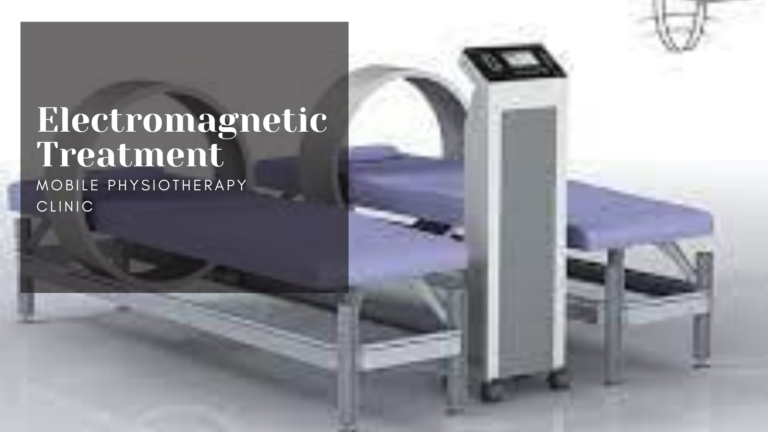
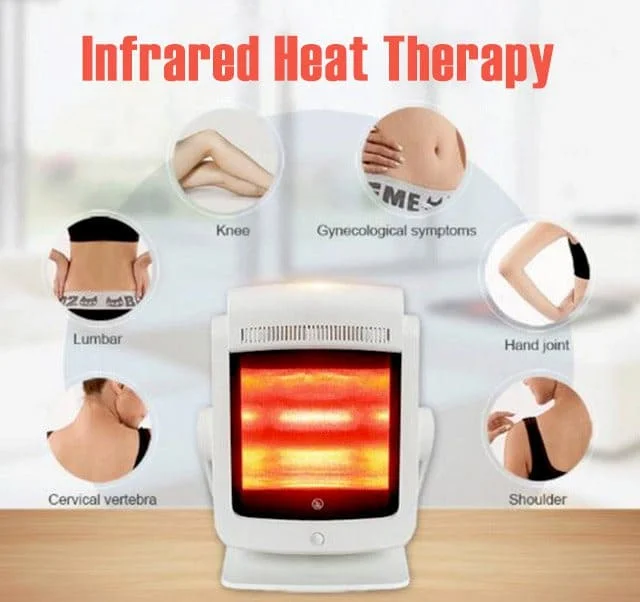
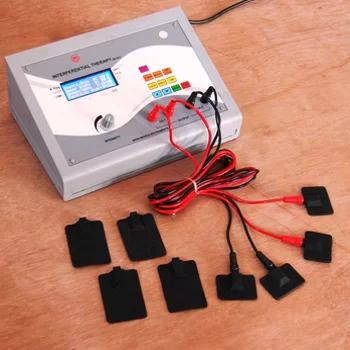
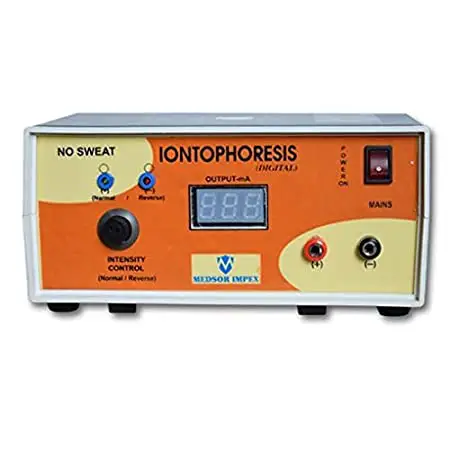

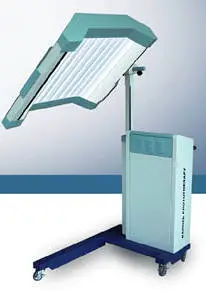
One Comment